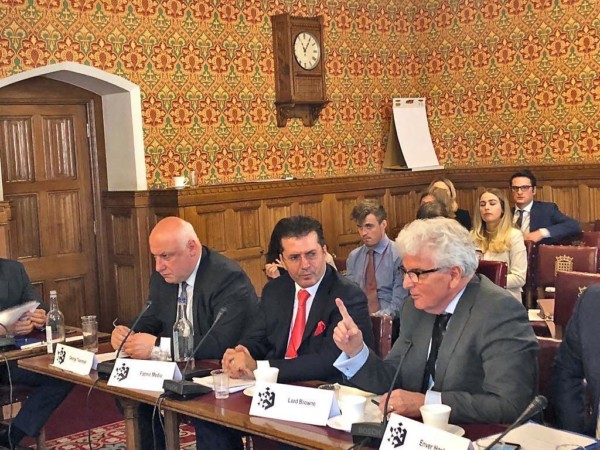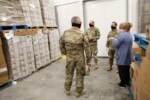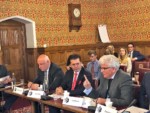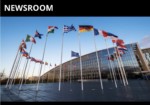CENTRE FOR SCIENCE & SECURITY STUDIES
Policy Recommendations: Options for P5 Cooperation
December 2019
The P5 Process brings together the five nuclear weapon states (NWS)—China, France, Russia,
the United Kingdom, and the United States—recognised by the Treaty on the Non-Proliferation of Nuclear Weapons (NPT) in a dedicated forum to discuss their unique responsibilities under the Treaty. Originally conceived to demonstrate the NWS commitment to their NPT obligations and facilitate confidence-building and cooperation on disarmament issues, the P5 Process has had mixed success since it was established in 2009.
King’s College London (KCL) and the European Leadership Network (ELN) hosted two workshops in October and November 2019 with experts and government officials from each of the P5 countries to test proposals for the P5 Process. The objective was to explore further opportunities for P5 cooperation ahead of the London conference in February 2020 and NPT Review Conference (RevCon) in May 2020. The recommendations captured here do not represent the views of any government or individual participants, but rather are based on the independent analysis of the project leads. Recommendations include:
Doctrines and Transparency
1. Questions on Nuclear Policies and Doctrines: P5 governments have issued documents and made public statements about their nuclear policies and doctrines. To facilitate constructive engagement among the P5 and with Non-Nuclear Weapon States (NNWS), the P5 should provide responses to the following questions and produce a joint P5 doctrines paper with the collated responses. This would facilitate substantive internal exchanges on doctrine and posture between the P5 and provide a document to be issued and discussed at the 2020 NPT Review Conference doctrines side-meeting. Questions include but are not limited to the following:
a. What is the role of nuclear weapons in your national
security strategy? To what extent has this and your
arsenal evolved since the end of the Cold War?
b. How does your force posture and force planning
support your national security strategy?
c. Under what circumstances would you consider
the use of nuclear weapons?
2. Reagan-Gorbachev Statement: The P5 should respond to the widespread interest and expectation
of reaffirming the Reagan-Gorbachev statement
that “a nuclear war cannot be won and must never
be fought.” The optics of not restating will reflect badly on the P5. In the absence of P5 agreement to reaffirm the Reagan-Gorbachev statement, or another common formulation, individual P5 members would be free to adopt their own position – reaffirm Reagan- Gorbachev, state a new formulation, or ignore the issue. Alternatively, a separate Trump-Putin statement would be significant for the RevCon.
supported by
3. Nuclear testing moratorium: The P5 should issue
a joint statement addressing their unilateral nuclear testing moratoria and the work of the CTBTO.
Such a joint statement could call on all states possessing nuclear weapons to refrain from nuclear weapons testing and express support for the CTBTO Preparatory Committee and the International Monitoring System and International Data Center.
Strategic Risk Reduction
4. P5 working group on strategic risk reduction and crisis stability: The P5 should establish a working group on strategic risk reduction and crisis stability for the next NPT Review cycle, and announce this decision at the 2020 RevCon. This will demonstrate that the P5 are taking seriously the NNWS concerns of growing nuclear risks and that the P5 are pursuing efforts to do more to promote risk reduction. The working group would assess:
a. What actions, deployments, activities or behaviours could lead to misunderstandings or miscalculations that could trigger or exacerbate a crisis?
b. What are the implications for strategic stability
of various kinds of systems – non-nuclear (e.g., missile defence, prompt global strike, cyber, counterspace), nuclear (e.g., non-strategic nuclear weapons), and novel (e.g., hypersonic glide vehicles, nuclear-powered cruise missiles)? What do you regard as the principal threats to strategic stability today?
The working group would commission an expert study to provide a comprehensive inventory of existing and historical global risk reduction measures.
The Way Ahead: The RevCon and the 2025 Agenda
5. 2020 RevCon:
a. Responding to the Treaty on the Prohibition
of Nuclear Weapons (TPNW): The P5 should seek to avoid the TPNW becoming a prominent and contentious issue at the RevCon. In their joint statement, the P5 could ignore the issue of the
TPNW and not mention it, or
i. Acknowledge the conclusion of the TPNW
during the previous review cycle;
ii. Note that it cannot be a substitute for the
NPT; and
iii. State that it cannot become customary
international law.
b. Preparing for achieving a consensus RevCon final document: The P5 must support efforts to achieve a consensus final document and also consider working to ensure a successful conference outcome in the absence of such a consensus. The P5 could engage with NNWS in advance of RevCon, including from the Non-Aligned Movement (NAM), New Agenda Coalition (NAC), as well as the Non-Proliferation and Disarmament Initiative (NPDI) to lay the groundwork for a successful RevCon.
c. Preparing a joint statement and the RevCon side-meeting: The P5 are currently planning
to hold a side event at RevCon on nuclear doctrines, which could be divided into two parts: first, to present on progress within the P5 process itself, the usefulness of the process, and plans going forward; and second, to circulate copies
of the collective P5 doctrines paper (see first recommendation) with prepared questions to allow for an open discussion.
6. Next Review Cycle: The P5 should commit
to continue the P5 process, meet annually, and agree on a programme of work that will include the following topics:
a. The impact of emerging technologies on nuclear
doctrines and strategic risk reduction as part of the newly announced working group on strategic risk reduction and crisis stability;
b. The future of arms control, including “rules of
the road,” risk reduction and confidence-building measures, and communications channels as well as more formal and legally binding agreements;
c. Engaging with the NNWS; and
d. Implementation of past political commitments
under the NPT, such as the 2000 “13 steps” and 2010 64-point Action Plan, and areas of progress, with explanations for why progress has slowed
in some areas.
www.europeanleadershipnetwork.org
www.kcl.ac.uk/csss






Leave a Reply